|
 |
 Автор: Williams Автор: Williams
 Дата: 27 июня 2017 Дата: 27 июня 2017
 Просмотров: 2 367 Просмотров: 2 367 |
| |
Alain Nussbaumer, Luis Borges, Laurence Davaine - Fatigue Design of Steel and Composite Structures:
Eurocode 3: Design of Steel Structures, Part 1-9 Fatigue
Eurocode 4: Design of Composite Steel and Concrete Structures
Wiley, 2011
pdf, 300 pages, english
ISBN: 978-3-433-02981-7
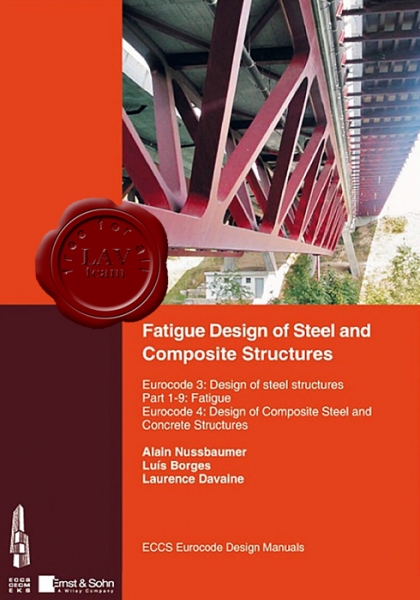
This volume addresses the specific subject of fatigue, a subject not familiar to many engineers, but still relevant for proper and good design of numerous steel structures. It explains all issues related to the subject: Basis of fatigue design, reliability and various verification formats, determination of stresses and stress ranges, fatigue strength, application range and limitations. It contains detailed examples of applications of the concepts, computation methods and verifications. |
| |
 Читать статью дальше (комментариев - 8)
Читать статью дальше (комментариев - 8)
| |
|
 |
 Автор: Williams Автор: Williams
 Дата: 19 июня 2017 Дата: 19 июня 2017
 Просмотров: 4 184 Просмотров: 4 184 |
| |
Dan Dubina, Viorel Ungureanu, Raffaele Landolfo - Design of Cold-formed Steel Structures
Eurocode 3: Design of Steel Structures
Part 1-3 – Design of Cold-formed Steel Structures
Wiley, 2012
pdf, 676 pages, english
ISBN: 978-3-433-02979-4
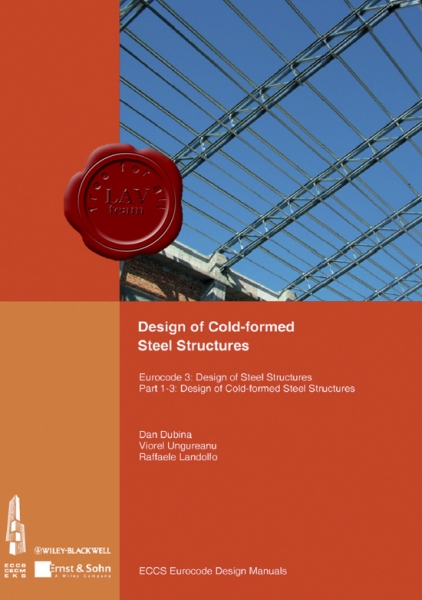
Following pioneering research in the 1940s, research into cold-formed steel intensified in the 1970s and led to numerous national European design specifications, and subsequently the preparation of Part 1-3 of Eurocode3 (EN1993-1-3) for cold-formed steel structures. Now a Euronorm, EN1993-1-3 is fully embedded in the Eurocode framework. This book serves as a reference text for design engineers using EN1993-1-3. It forms part of the suite of ECCS Eurocode Design Manuals prepared in recent years for other parts of EN1993 and other Eurocodes to aid the implementation of Eurocodes in European states. The book draws on the authors’ considerable experience with designing cold-formed steel structures, both as academics and practitioners, and strikes a balance between theory and practice. Applications of cold-formed steel have broadened over the years. Coldformed steel is now used as primary structural elements, as in steel framed residential buildings, steel storage racks, portal frames, and tubular truss and frame structures, and as secondary structural elements, as in roofing and wall systems featuring purlins, girts and corrugated steel sheeting. Additionally, integrated building systems have been developed, such as cassettes, as have stressed skin principles for designing the building envelope. The design of cold-formed steel is perceived to be challenging by many structural engineers because the thinness of the steel leads to buckling and failure modes not found in the design of hot-rolled and fabricated steel structures. Furthermore, roll-forming techniques have developed rapidly in recent decades and spawned highly optimised cross sections featuring intermediate stiffeners and complex lip stiffeners, which are not easily designed using conventional methods. The book covers the design of structural members of complex shapes and connections as well as the design of integrated structural solutions, such as cassettes, and design using stressed skin principles. The structural behaviour and design to EN1993-1-3 are explained and numerous worked examples are included to guide or enable a cross-check for structural design engineers. The final Chapter 8 deserves a special mention as it addresses the comprehensive range of considerations other than structural to be made in cold-formed steel construction, including thermal transmission and sound, serviceability, durability, sustainability and recyclability. Methods of design for single and multi-storey housing are explained in detail, concluding with a comprehensive worked example of a residential building. This book presents a landmark in the development of guidelines for the structural design of cold-formed steel. It is arguably the most extensive reference available for designing cold-formed steel structures to EN1993-1-3, and will serve the structural engineering community well in adapting to the expanding range of residential and industrial applications of cold-formed steel. |
| |
 Читать статью дальше (комментариев - 16)
Читать статью дальше (комментариев - 16)
| |
|
 |
 Автор: Williams Автор: Williams
 Дата: 16 июня 2017 Дата: 16 июня 2017
 Просмотров: 3 664 Просмотров: 3 664 |
| |
Darko Dujmovic, Boris Androic, Ivan Lukacevic - Composite Structures according to Eurocode 4: Worked Examples
Wiley, 2014
pdf, 926 pages, english
ISBN: 978-3-433-03107-0
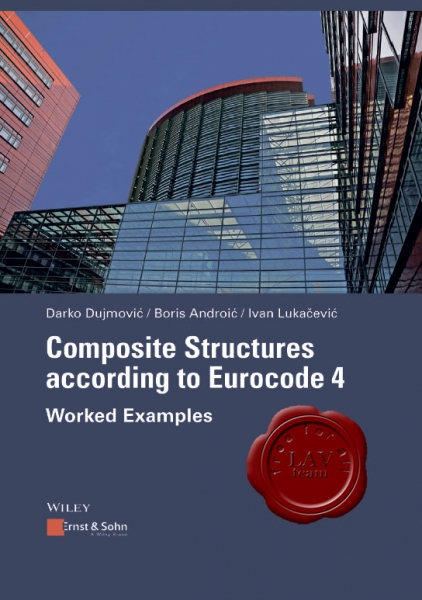
The use of composite structures in construction is increasing. The optimized combination of the two materials concrete and steel produces particularly cost-efficient structures. This book presents a large number of numerical examples with detailed explanations of the provisions of Eurocode 4. It deals with the most common structural components in building construction: beams, columns and slabs. Furthermore, comprehensive chapters provide insight into the topics of creep and shrinkage, as well as fatigue. This book enables the reader to efficiently perform analyses of composite structures. It is a valuable reference book for professionals as well as an outstanding means for students to become familiar with the Eurocode 4. |
| |
 Читать статью дальше (комментариев - 20)
Читать статью дальше (комментариев - 20)
| |
|
 |
 Автор: Williams Автор: Williams
 Дата: 14 июня 2017 Дата: 14 июня 2017
 Просмотров: 4 911 Просмотров: 4 911 |
| |
Jean-Pierre Jaspart & Klaus Weynand - Design of Joints in Steel and Composite Structures
Eurocode 3: Design of Steel Structures. Part 1-8 Design of Joints.
Eurocode 4: Design of Composite Steel and Concrete Structures. Part 1-8 Design of Joints.
Wiley, 2016
pdf, 402 pages, english
ISBN: 978-3-433-02985-5
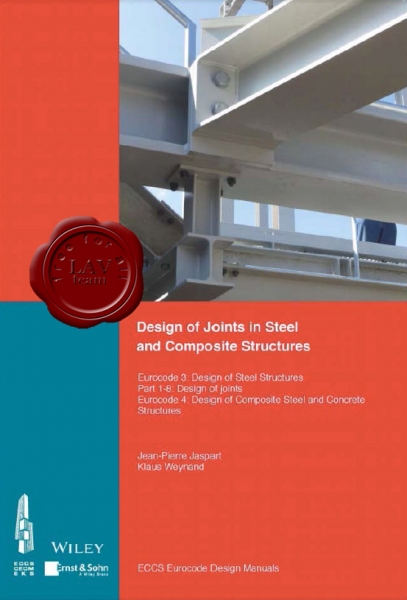
This book details the basic concepts and the design rules included in Eurocode 3:
- Design of steel structures: Part 1-8.
- Design of joints.
- Joints in composite construction are also addressed through references to Eurocode 4.
- Design of composite steel and concrete structures.
- Part 1-1: General rules and rules for buildings.
Attention has to be duly paid to the joints when designing a steel or composite structure, in terms of the global safety of the construction, and also in terms of the overall cost, including fabrication, transportation and erection. Therefore, in this book, the design of the joints themselves is widely detailed, and aspects of selection of joint configuration and integration of the joints into the analysis and the design process of the whole construction are also fully covered.
Connections using mechanical fasteners, welded connections, simple joints, moment-resisting joints and lattice girder joints are considered. Various joint configurations are treated, including beam-to-column, beam-to-beam, column bases, and beam and column splice configurations, under different loading situations (axial forces, shear forces, bending moments and their combinations).
The book also briefly summarises the available knowledge relating to the application of the Eurocode rules to joints. |
| |
 Читать статью дальше (комментариев - 21)
Читать статью дальше (комментариев - 21)
| |
|
 |
 Автор: Williams Автор: Williams
 Дата: 10 июня 2017 Дата: 10 июня 2017
 Просмотров: 6 502 Просмотров: 6 502 |
| |
Gunthar Pangaribuan - An Introduction to Excel for Civil Engineers
CreateSpace Independent Publishing, 2016
pdf, 387 pages, english
ISBN-10: 1537137719
ISBN-13: 978-1537137711
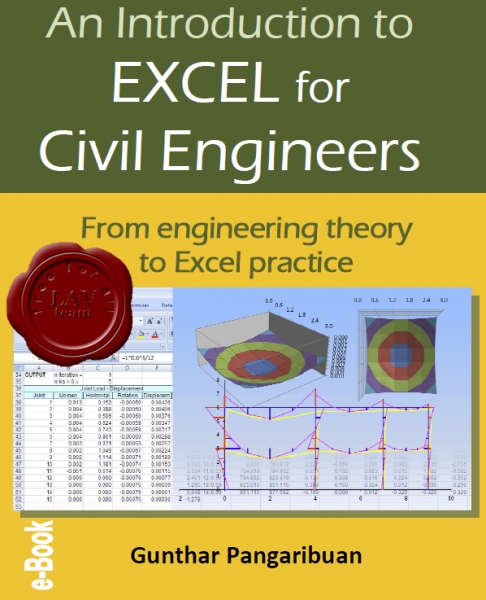
It's a must have standard engineering book that should have read many years ago. It addresses many articles that may not be covered by any Excel for engineering texts, such as step by step guides to create an application program and how to convert the steps into VBA code, how to perform matrix operations, macro for creating an engineering chart, a brief and simple guide to become an instant Excel-VBA programmer, and more... Also to be presented the depiction in AutoCAD program. Yes! AutoCAD is chosen because one of its advantages that relies on high drawing accuracy.
You will learn how to create a simple AutoCAD script file using Excel formulas and Excel-VBA. It is expected that you will be able to create simple Cartesian graph in AutoCAD, even you are an AutoCAD first time user! With the ease of working with Excel, coupled with benefit of the given examples in this book, it is expected to increase the interest of the reader to create new original application programs. Thus, each model or even a specific calculation will be an exciting challenge for a programming job is already enjoyable. Happy Excel programming! |
| |
 Читать статью дальше (комментариев - 45)
Читать статью дальше (комментариев - 45)
| |
|
 |
 Автор: Williams Автор: Williams
 Дата: 31 мая 2017 Дата: 31 мая 2017
 Просмотров: 2 725 Просмотров: 2 725 |
| |
KAMAL I.M. AL-MALAH - ASPEN PLUS Chemical Engineering Applications
Wiley, 2017
pdf, 623 pages, english
ISBN 978-1-119-13123-6
Kamal Al-Malah, is professor of chemical engineering at Higher Colleges of Technology, United Arab Emirates and former chairman of the chemical engineering department at the University of Hail in Saudi Arabia. He holds B.S., M.S., and Ph.D. degrees in chemical/biochemical engineering. Dr. Al-Malah graduated from Oregon State University in 1993 and his area of specialty deals with mathematical modeling, optimization, simulation, and computer-aided design.
Aspen Plusis a process flowsheet simulator. A flowsheet simulator is a computer software that is used to quantitatively model a chemical processing plant. In general, a chemical processing plant is comprised of the core reactor unit and different additional unit operations, in the form of pre- and post-treatment steps, as well. In this regard, Aspen Plus is a very powerful tool that can be used to tackle different chemical process and unit operation calculation-based tasks, in the form of modeling, simulation, optimization, data regression, design specifications, sensitivity analysis, solids handling, dynamics and control, energy saving, safety compliance, and finally process economic analysis.
The book comprises 18 chapters. Each chapter, except the last chapter, constitutes a running tutorial that mainly covers one or more of common unit operations or chemical processes found in chemical industries. Moreover, the book has end-of-chapter contextual problems. The last chapter contains comprehensive problems (or term projects) that require an extensive knowledge of Aspen Plus features and tools that are already explained in previous chapters.
Overall, the book reflects the full-fledge nature ofAspen Plus implementation to versatile chemical process industries. |
| |
 Читать статью дальше (комментариев - 13)
Читать статью дальше (комментариев - 13)
| |
|
 |
 Автор: Williams Автор: Williams
 Дата: 5 апреля 2017 Дата: 5 апреля 2017
 Просмотров: 3 269 Просмотров: 3 269 |
| |
Barnali Dixon & Venkatesh Uddameri - GIS and Geocomputation for Water Resource Science and Engineering
Wiley, 2016
pdf, 1095 pages, english
ISBN 978-1-118-35414-8 (cloth)
ISBN 978-1-118-35413-1 (pbk)
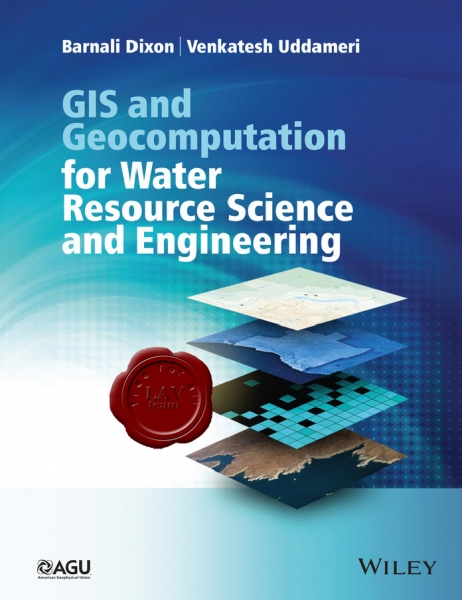
GIS and Geocomputation for Water Resource Science and Engineering not only provides a comprehensive introduction to the fundamentals of geographic information systems but also demonstrates how GIS and mathematical models can be integrated to develop spatial decision support systems to support water resources planning, management and engineering. The book uses a hands-on active learning approach to introduce fundamental concepts and numerous case-studies are provided to reinforce learning and demonstrate practical aspects. The benefits and challenges of using GIS in environmental and water resources fields are clearly tackled in this book, demonstrating how these technologies can be used to harness increasingly available digital data to develop spatially-oriented sustainable solutions. In addition to providing a strong grounding on fundamentals, the book also demonstrates how GIS can be combined with traditional physics-based and statistical models as well as information-theoretic tools like neural networks and fuzzy set theory. |
| |
 Читать статью дальше (комментариев - 14)
Читать статью дальше (комментариев - 14)
| |
|
 |
 Автор: Williams Автор: Williams
 Дата: 13 января 2017 Дата: 13 января 2017
 Просмотров: 3 835 Просмотров: 3 835 |
| |
Elliot Gindis - Up and Running with AutoCAD 2017 2D and 3D Drawing and Modeling
Academic Press, 2016
pdf, 730 pages, english
ISBN: 978-0-12-811058-4
Up and Running with AutoCAD 2017: 2D and 3D Drawing and Modeling presents Gindis’ combination of step-by-step instruction, examples, and insightful explanations. The emphasis from the beginning is on core concepts and practical application of AutoCAD in engineering, architecture, and design. Equally useful in instructor-led classroom training, self-study, or as a professional reference, the book is written with the user in mind by a long-time AutoCAD professional and instructor based on what works in the industry and the classroom.
- Strips away complexities and reduces AutoCAD to easy-to-understand basic concepts.
- Teaches only what is essential in operating AutoCAD, thereby immediately building student confidence.
- Fully covers the essentials of both 2D and 3D in one affordable easy to read volume.
- Presents basic commands in a documented, step-by-step guide on what to type in and how AutoCAD responds.
- Includes several complementary video lectures by the author that accompany both 2D and 3D sections.
|
| |
 Читать статью дальше (комментариев - 18)
Читать статью дальше (комментариев - 18)
| |
|
 |
 Автор: Williams Автор: Williams
 Дата: 2 января 2017 Дата: 2 января 2017
 Просмотров: 4 704 Просмотров: 4 704 |
| |
Schlumberger Petrel 2009 - seismic-to-simulation software - training course
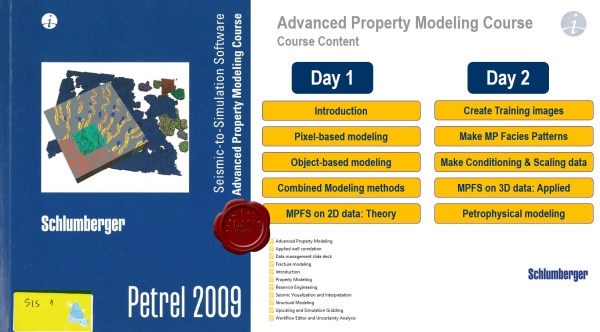
Petrel is a software platform used in the exploration and production sector of the petroleum industry. It allows the user to interpret seismic data, perform well correlation, build reservoir models, visualize reservoir simulation results, calculate volumes, produce maps and design development strategies to maximize reservoir exploitation. Risk and uncertainty can be assessed throughout the life of the reservoir. Petrel is developed and built by Schlumberger.
The purpose of this course is to build 3D model containing faults, horizons and properties. This 3D model will be used for volume calculations, well design and plotting. You will learn the process of importing the data, building the faults and inserting the horizons in time. These horizons, as well as entire 3D grid, will be depth converted, before inserting geological zones and layering. Psychophysical properties will then be distributed in the 3D grid based on the well log information. By attending this course you will obtain a general introduction to the main functionalities in Petrel. After having completed the course you will have been introduced to enough options in the program to be able to know how to build such a model on your own. |
| |
 Читать статью дальше (комментариев - 18)
Читать статью дальше (комментариев - 18)
| |
|
 |
| ПОИСК ПО САЙТУ |
 |
|
 |
| КАЛЕНДАРЬ | | |
 |
| « Октябрь 2025 » |
|---|
| Пн | Вт | Ср | Чт | Пт | Сб | Вс |
|---|
| | 1 | 2 | 3 | 4 | 5 | | 6 | 7 | 8 | 9 | 10 | 11 | 12 | | 13 | 14 | 15 | 16 | 17 | 18 | 19 | | 20 | 21 | 22 | 23 | 24 | 25 | 26 | | 27 | 28 | 29 | 30 | 31 | |
|
 | |
| |
|